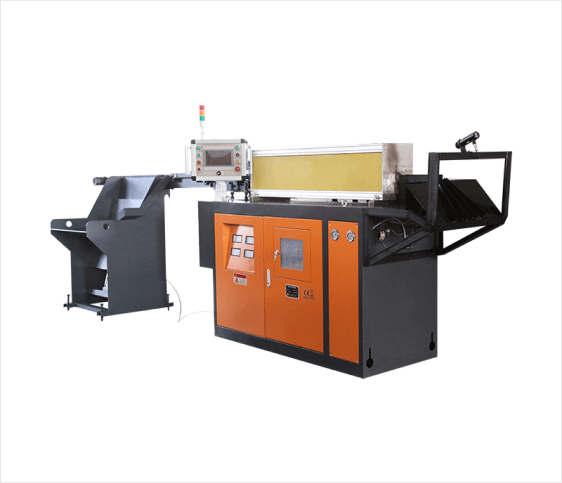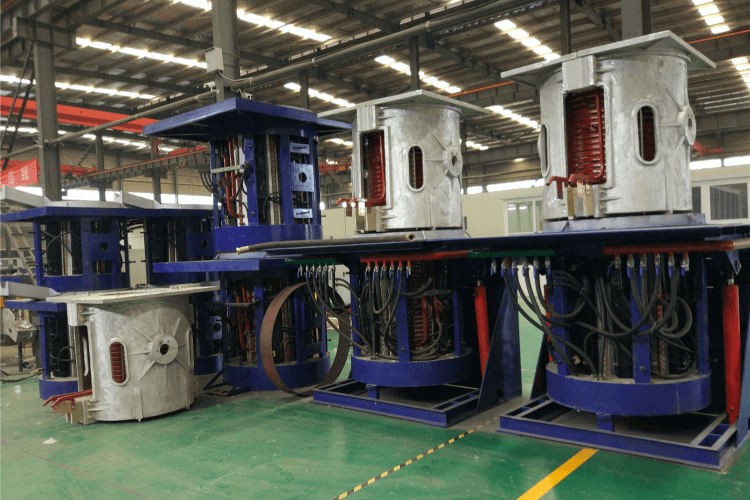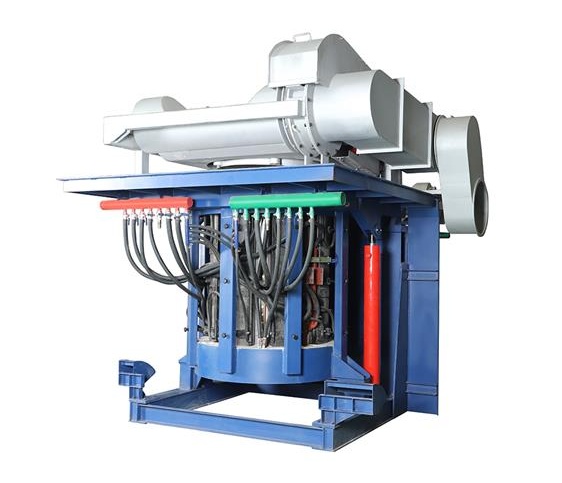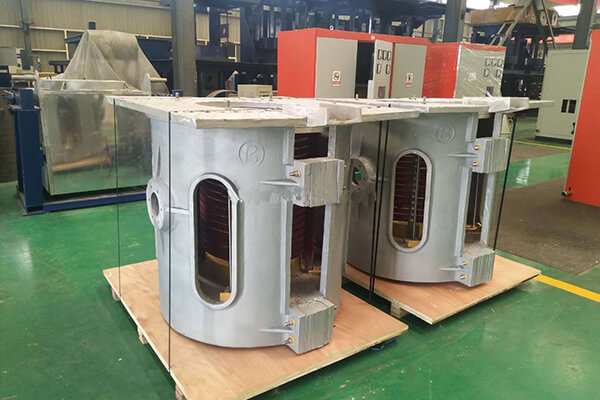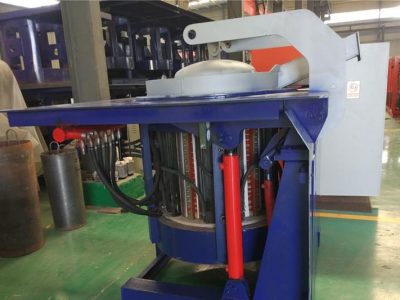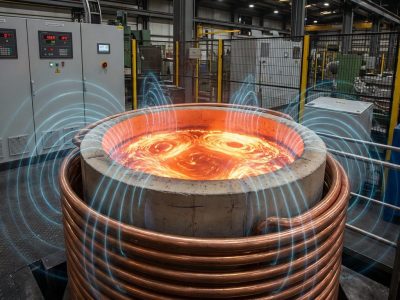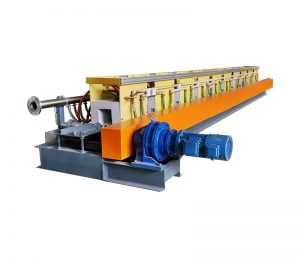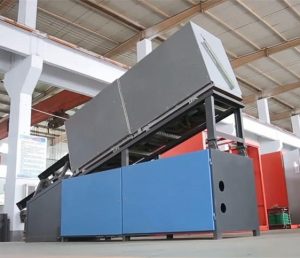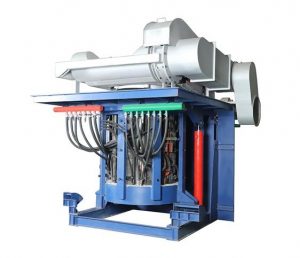A medium frequency induction melting furnace is valued for its strong overload capacity, fast heating speed, high metal recovery rate, and ability to produce high-quality molten metal. However, one of the key concerns for foundries and metal processing plants is how to reduce its energy consumption without compromising performance.
In this guide, we’ll explore the heating principle of a medium frequency induction furnace and share five proven methods to improve efficiency and save operational costs.
How a Medium Frequency Induction Melting Furnace Works
The medium frequency induction furnace operates on the transformer principle. Coils placed outside the furnace act as the primary winding. When powered, they generate an alternating magnetic field, which induces current in the metal charge, heating and melting it from within.
Furnaces with a power frequency higher than 50 Hz and lower than 10,000 Hz are considered “medium frequency.” Compared to other heating methods, they offer:
Consistent heating quality
Higher efficiency
Faster heating
Easier temperature control
1. Select the Optimal Power Frequency
Power frequency affects both heating depth and efficiency. Increasing frequency can reduce current and coil loss, improving overall efficiency. However, higher frequencies concentrate heat near the surface of the metal (skin effect), which can slow heat penetration and increase losses during longer transfer times.
Tip: Choose a balanced power frequency that provides both rapid surface heating and efficient core temperature rise for your specific metal type and batch size.
2. Increase Matching Power Capacity
The ratio of rated power to furnace capacity directly affects melting time and energy usage. A higher ratio results in shorter melting cycles, lower energy consumption, and higher throughput. Conversely, an underpowered furnace runs longer, consumes more electricity, and reduces productivity.
Recommendation: Ensure your furnace’s power capacity is well-matched to your melting requirements to minimize energy waste.
3. Reduce Power Supply Line Losses
Energy losses in the medium frequency power supply lines can significantly impact efficiency. To reduce them:
- Maintain optimal busbar length and insulation distance to minimize resistance.
- Control the temperature of bare busbars using forced water cooling to prevent resistance increase.
- Use parallel circuits with larger conductor cross-sections to reduce inherent material resistance.
These steps keep transmission losses low and improve the system’s overall energy performance.
4. Precisely Measure and Control Molten Metal Temperature
Accurate temperature measurement is critical. If readings are higher than the actual temperature, premature pouring may occur, affecting product quality. If readings are too low, heating continues unnecessarily, wasting energy and shortening furnace lining life.
Best Practice: Use reliable temperature sensors and integrate automated controls to maintain optimal pouring temperatures.
5. Choose a High-Quality Neutral Lining
A neutral furnace lining made of high-alumina refractory materials can significantly extend furnace service life. With excellent thermal stability and a maximum temperature resistance exceeding 1,800°C, these linings reduce repair frequency, prevent leakage, and lower overall operating costs.
Final Thoughts
By applying these strategies—optimizing frequency, matching power, reducing line losses, controlling temperature precisely, and using durable linings—you can reduce the energy consumption of your medium frequency induction melting furnace while maintaining high production efficiency.
With continuous advancements in manufacturing and operational practices, this technology is becoming even more versatile in melting various metals and alloys.
For expert consultation and high-performance medium frequency induction melting furnaces, contact Luoyang Judian, your trusted partner in industrial heating and melting solutions.
